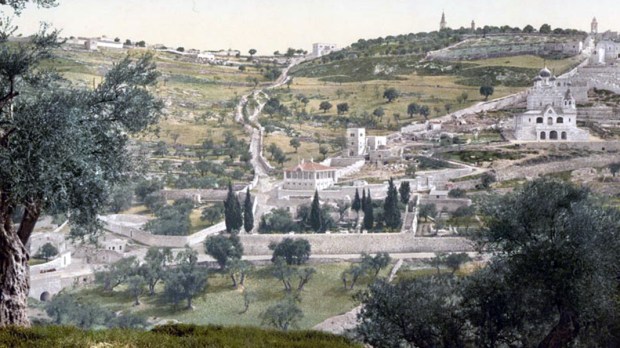In the Gospel of Mark, after the Last Supper, Jesus and his disciples “came to a place named Gethsemane, and he said to his disciples, ‘Sit here while I pray'” (Mark 14:32). At the same time, in the Gospel of Matthew, “after singing a hymn, they went out to the Mount of Olives” (Matthew 26:30).
Which is it? Did they go to the Mount of Olives, or the Garden of Gethsemane? Or is it the same place?
The Mount of Olives is part of a mountain range that separates Jerusalem from the Judaean desert. This particular “mountain” is the central peak, and resembles a large rocky hill. It was once a place of many olive trees.
The Garden of Gethsemane is a garden that sits at the base of the Mount of Olives. The name literally means “oil press” and is another reference to the presence of olive tress in the area.
To answer the question, after the Last Supper, Jesus and his disciples walked to the Mount of Olives, and more specifically, the Garden of Gethsemane that sits at its base.

Read more:
Can you stay one hour with me? The “Night Watch” of Holy Thursday

Read more:
A visual guide to Holy Week: Here’s what you need to know

